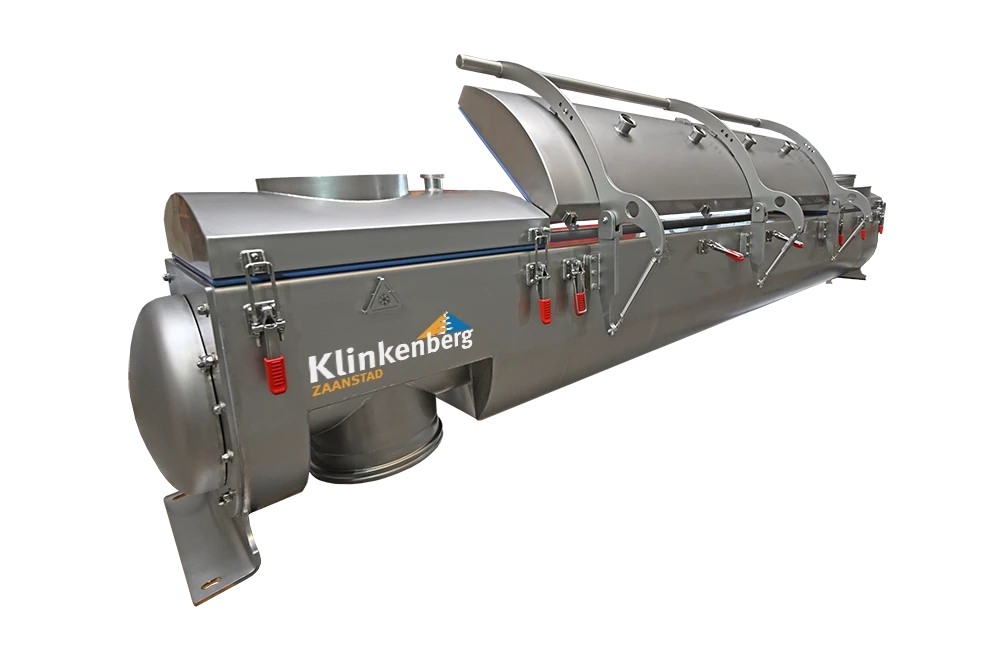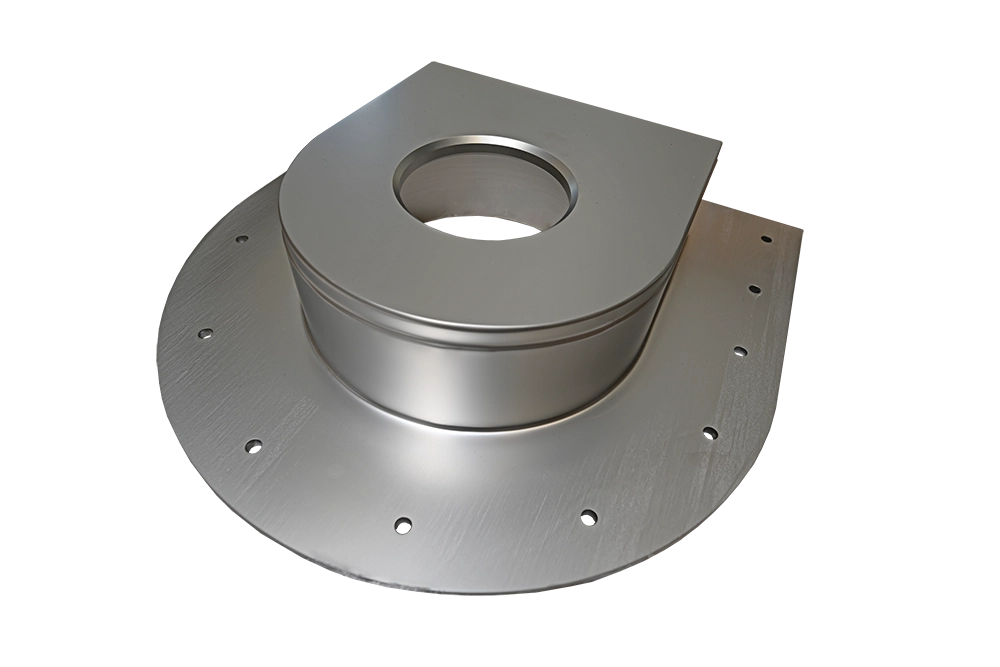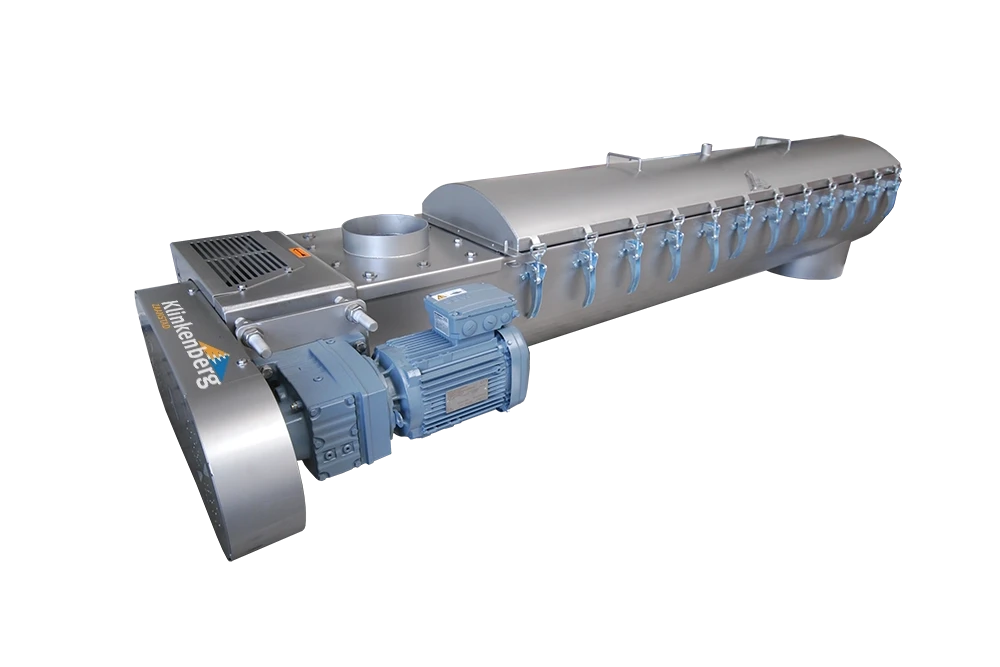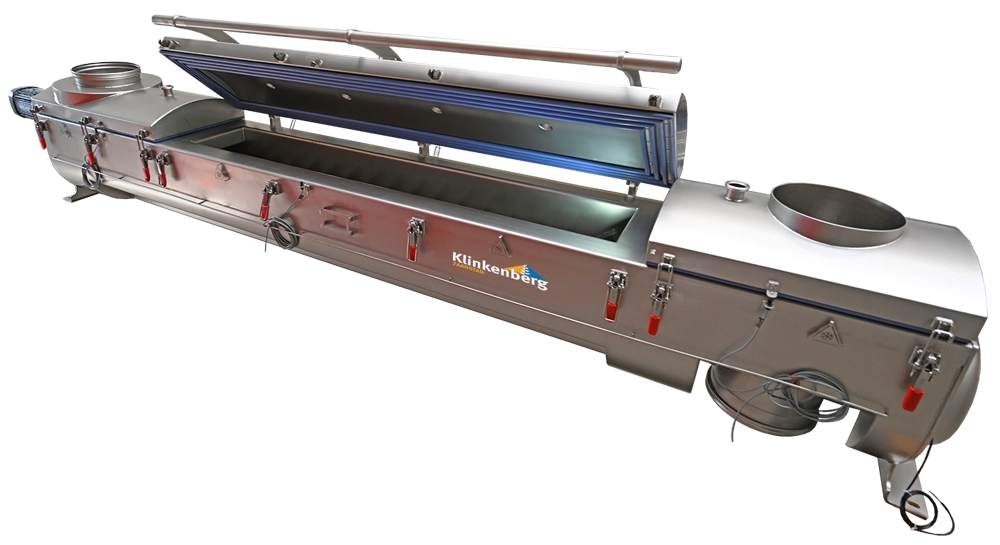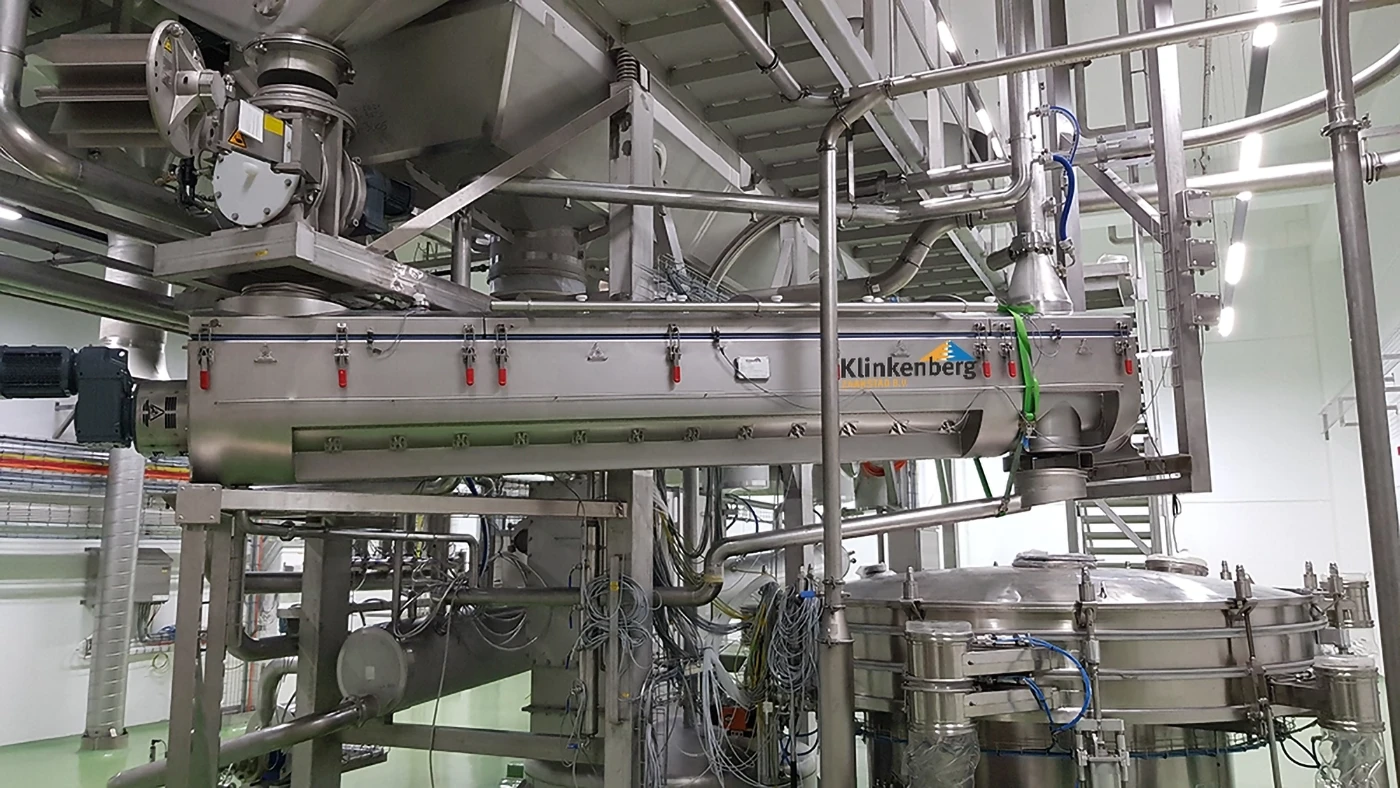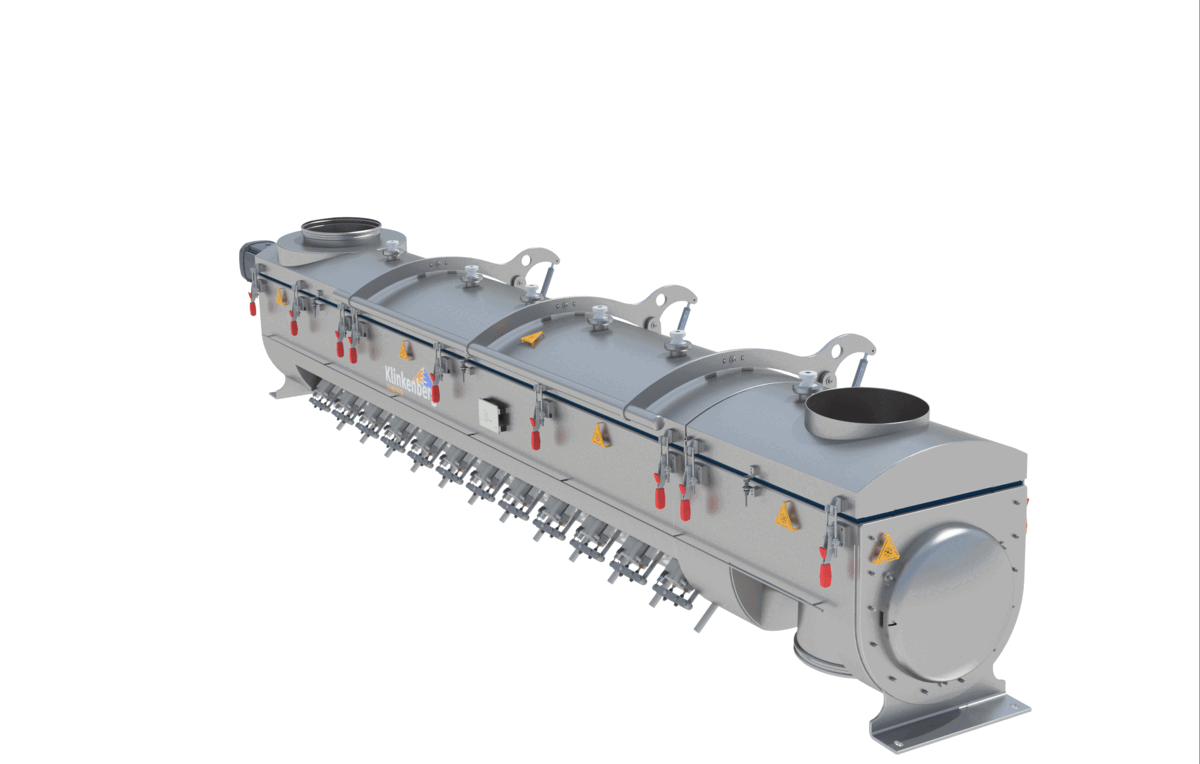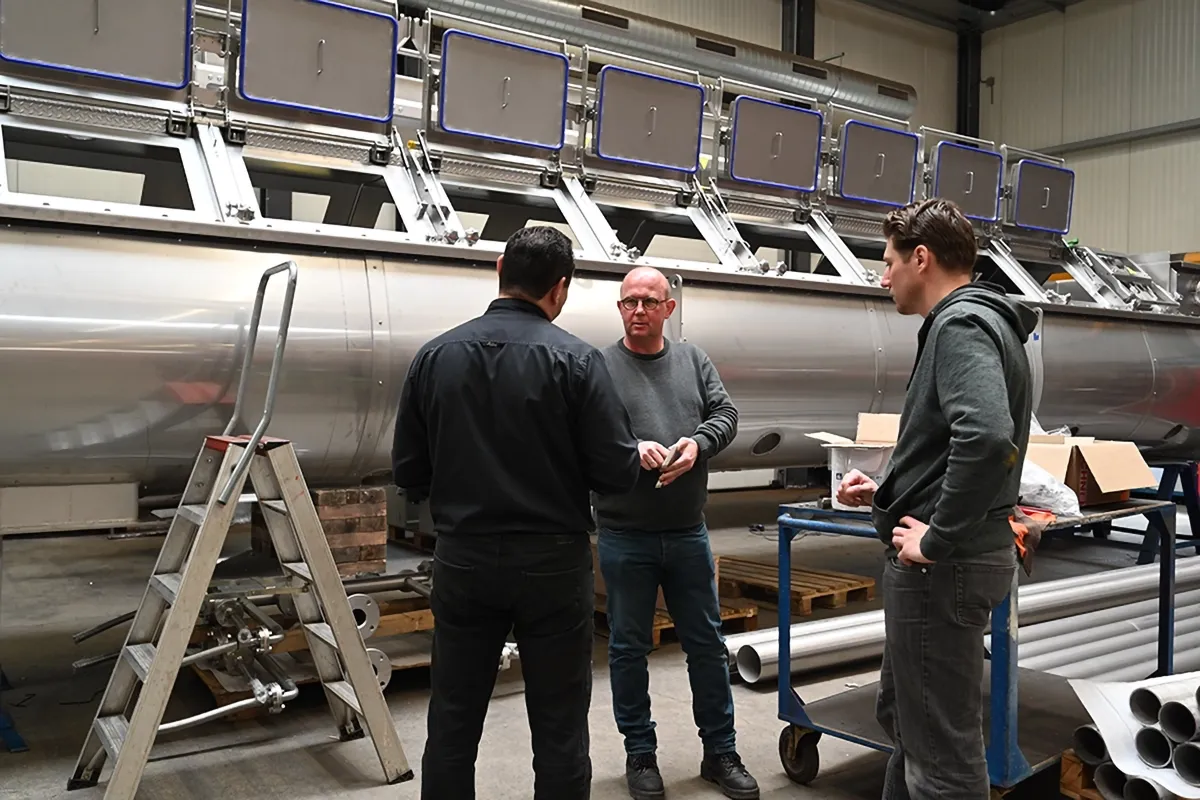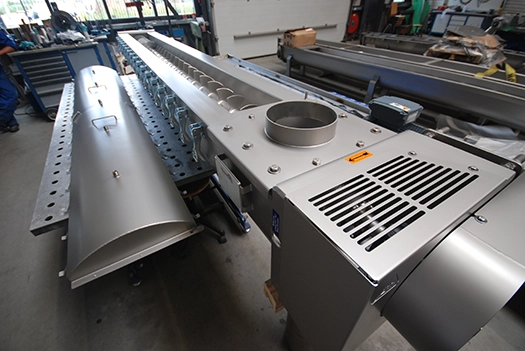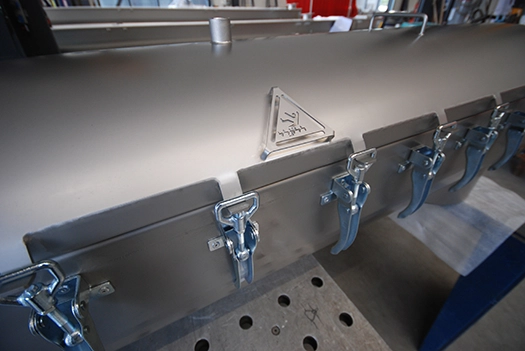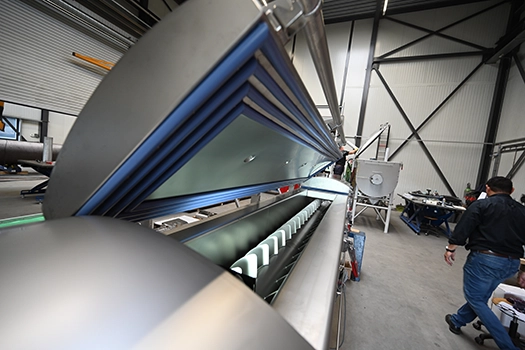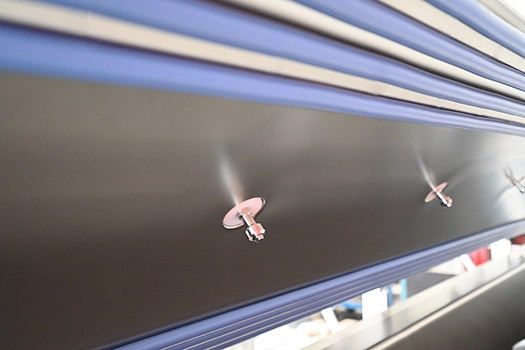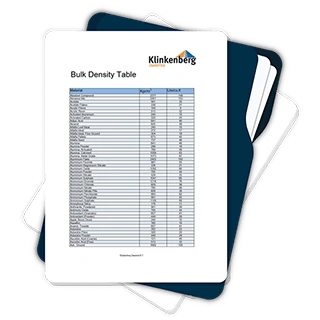Options for cryogenic Screw Heat ExchangersFlexible configurations and smart solutions for maximum cooling at extreme temperatures
Cryogenic coolers come in various designs, from paddle shafts to screw ribbons or a combination of both. Below is a brief overview of the available options:
- Direct product cooling is possible by injecting liquid nitrogen beneath the product bed using a LIXSHOOTER®. This saves nitrogen compared to dripping it on top of the product bed.
- Space-saving insulation: when standard insulation is not feasible, high-tech insulation like Insulair Cryogenic F® can be used.
- Hygienic design and finishing, such as polishing and ViwateQ®.
- All components according to FDA guidelines, including seals and bearing grease.
- Integrated SIP system.
